Qanba Obsidian 2 review: Heavy duty
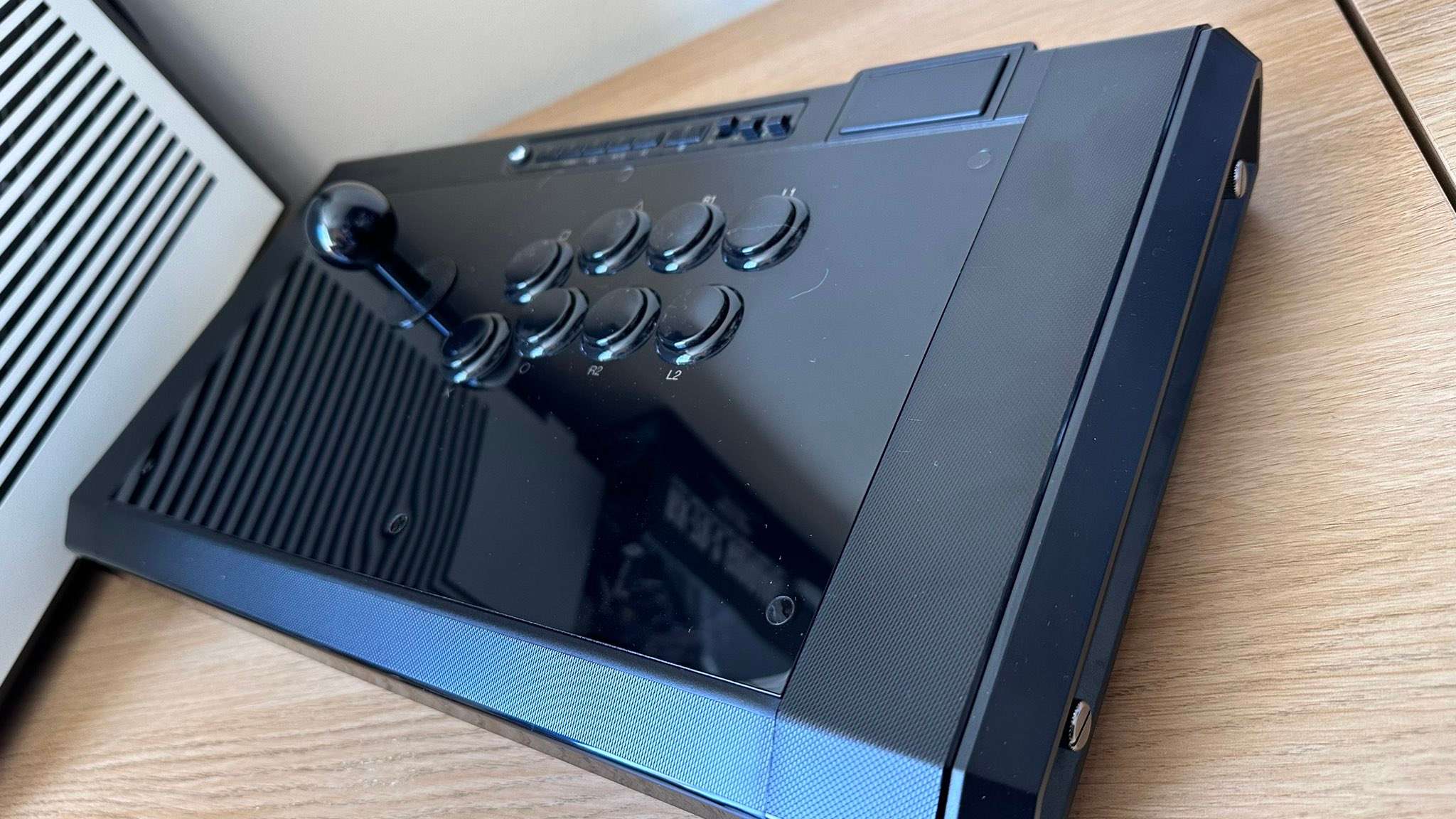 Dexerto
Dexerto The Qanba Obsidian 2 is a PS5-licensed arcade stick, primed for use in games like Street Fighter 6, but with more competition than ever, does it manage to stand out from the crowd?
Qanba is no stranger to making premium accessories, and the Obsidian 2 is no different. This brand-new generation arcade stick offers top-shelf materials like arcade-perfect parts, and a heavy chassis to boot. But, does it hold a candle to our favorite premium arcade stick, the Victrix Pro FS?
With Street Fighter 6 now out in the wild, we’ve had time to check out the Qanba Obsidian 2 as our tool of choice through ranked matches and more. Over 30 hours of testing later, we think this arcade stick might be one of our favorites, though it comes with more than a few caveats.
Key specs
- Buttons: Sanwa Denshi 30mm
- Lever: Sanwa Denshi Ball-top
- Gate: Square
- Connectivity: USB-A
- Platform: PS5, PS4, PC
- Features: Tournament lock function, Bat-top included, 3.5mm headphone jack
- Price: $299.99
Design
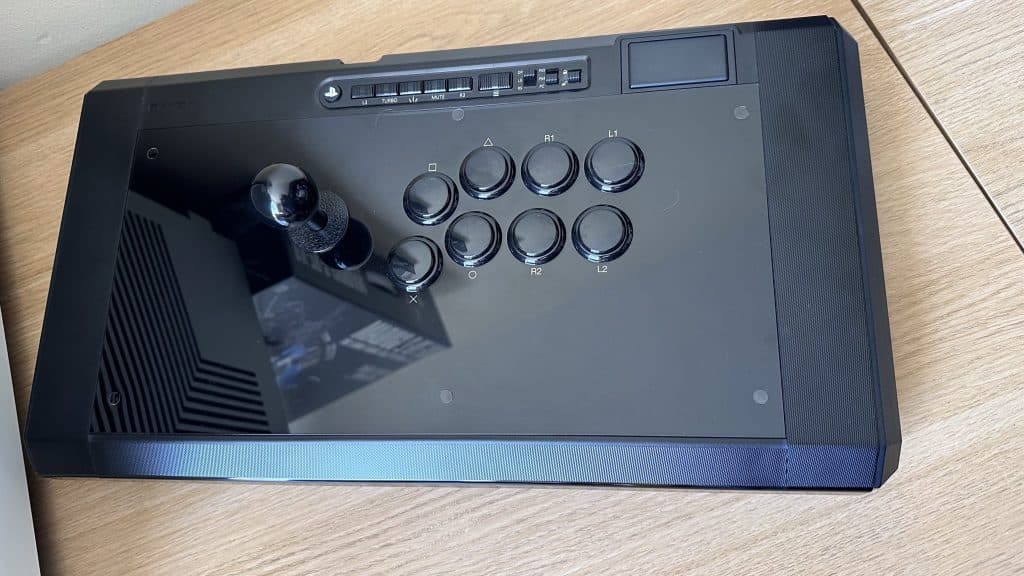 Dexerto
Dexerto The Quanba Obsidian shape has long been a fan-favorite ever since the first iteration’s release several years ago, and the Obsidian 2 is a departure from the original’s design but retains a similar core shape and all-important PS5 compatibility. The entire build is made from plastic, with a chamfered edge toward the front of the device. The stick has a relatively slim profile overall, and its black finish is a notable step down in aesthetics when compared to the original release.
Cable channel woes
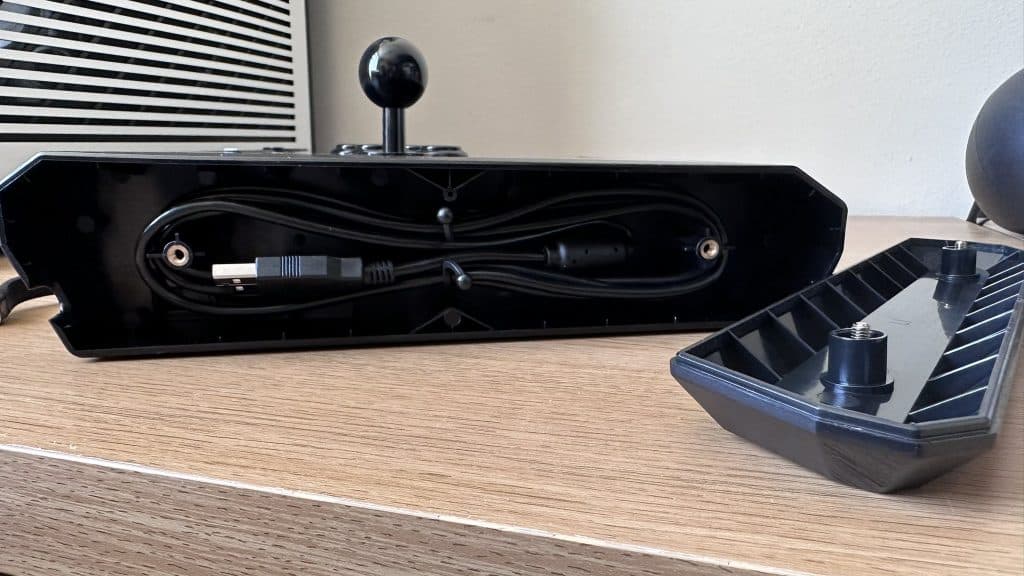 Dexerto
Dexerto Gone are the original release’s LED lights on the sides, and instead you have two storage chambers, which are locked in via captive thumbscrews. Inside the right-hand chamber is a spare bat-top, and storage for the default ball-top. Screw off the right-hand chamber to find your attached USB-A cable and a narrow cable channel at the top.
This is by far the most profoundly disappointing element of the stick itself. Not only is the cable permanently attached to the stick, but the cable chamber is relatively finicky to use. We would have much rather seen a simple compartment like the Nacon Daija. It’s likely that once you have the wire out, it’d be much easier to just wrap the cable around the stick, rather than tuck it back into the compartment.
A comfortable layout
All functions and controls are easily accessible on the front of the stick, which makes for easy utility when pressing uncommon buttons required for training modes. Additionally, the Viewlix-style layout of the Sanwa buttons and lever is excellent, and the high-quality parts are also a boon. Up at the top, there’s a 3.5mm headphone jack, which could be pretty messy due to its placement, we would have much rather seen this be placed at the bottom of the stick to prevent you from being tangled up in cables in the heat of battle.
One thing that I really love is the size of the Obsidian 2 itself. There’s ample space for your arms, and it feels great to use for extended periods of time, too.
Customization conundrum
On the bottom of the Qanba Obsidian 2 is a gigantic non-slip pad, a small widow to unscrew the top of the lever, to in addition to screws to open up the stick for maintenance. Again, it would have been nice to see a more user-friendly option for customization, instead of having to bust out a screwdriver.
Our biggest gripe with the Qanba Obsidian 2 is the piano finish, while it looks sleek out of the box, expect smudges galore on the piano-black finish, which you cannot easily replace with artwork of your own easily.
Gaming Performance
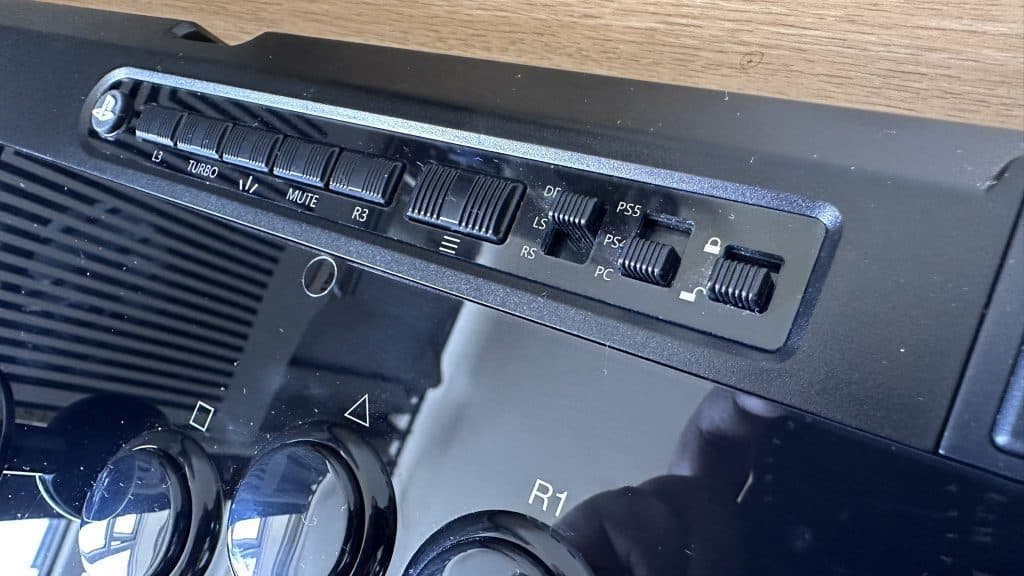 Dexerto
Dexerto Despite our various issues with its design, the Qanba Obsidian 2 is a joy to use in-game. When testing Street Fighter 6, the buttons and lever all have a satisfying deep thud, and we were able to run through both World Tour and ranked matches with ease. It feels better to use than the Victrix Pro FS, and we think that the top-panel layout is pretty much perfect.
Don’t expect to drop any inputs on any motion inputs that you have to perform, and the top panel of buttons makes it incredibly easy for you to practice with, too. A tournament lock function is also incredibly useful should you find yourself wanting to uninstall a game after an embarrassing defeat. The cross-platform nature of the stick also makes it easy to take to your locals.
Should you be lugging it around to tournaments, the issues with the undetectable, finicky cable chamber are exasperated. It made us choose to pick up a USB-A to USB-C converter to give the stick functionality it really should have had out of the box. We’ll drop a link below for the extender we used. Though, for a $300 device, having to go to these lengths is quite disappointing. Though performing the modification requires no soldering knowledge.
Should you buy it?
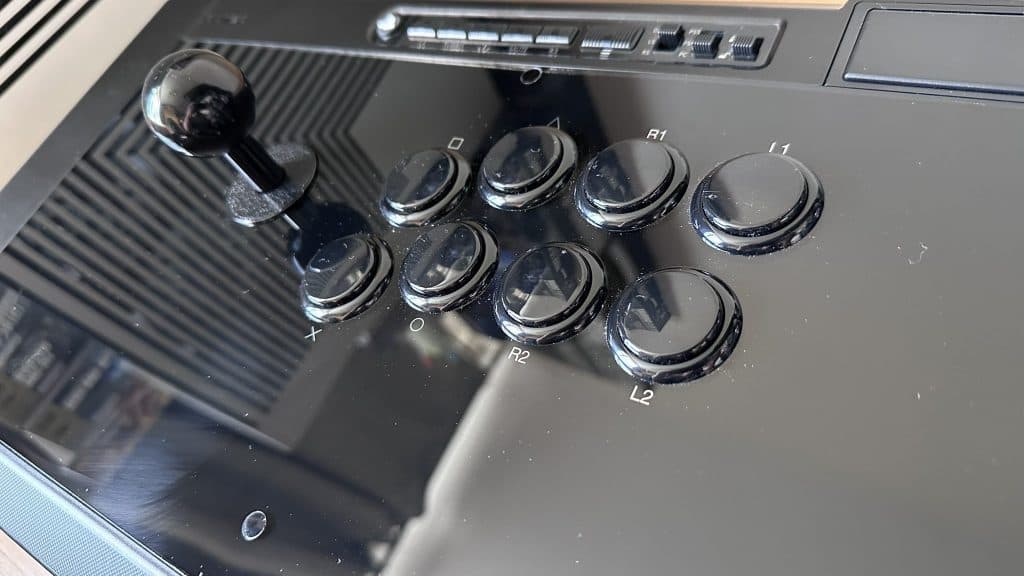 Dexerto
Dexerto At $300, the Qanba Obsidian 2 is an expensive proposition and comes in at one-third more expensive than its predecessor. However, for the cash, you get one of the most premium arcade stick experiences available for PS5, at a slightly cheaper price when compared to the Victrix Pro FS.
We’re not huge fans of its overall design, and there are plenty of issues with it that we hope Qanba will fix in another revision of the arcade stick later down the line. This is a good compromise for those looking to take their fighting games seriously, with a heavy-duty piece of hardware to match. We just wish some more thought was put into quality-of-life elements, and customization, too.
The Verdict: 4/5
The Qanba Obisidian 2 is more of a workhorse tool for those taking fighting games seriously, and if you are after one of the best PS5 sticks on the market, it easily trumps the likes of the Hori Fighting Stick Alpha and Nacon Daija. Just bear in mind that its overall design doesn’t quite hit the mark.
If you click on a product link on this page we may earn a small affiliate commission.